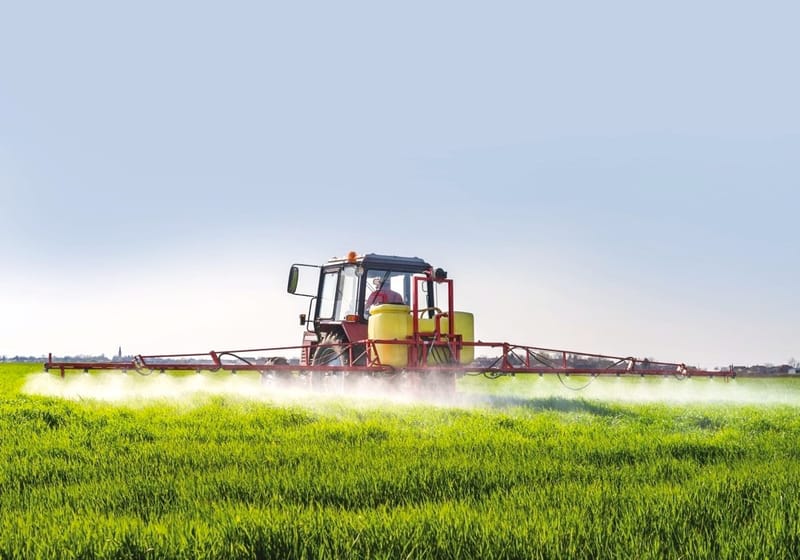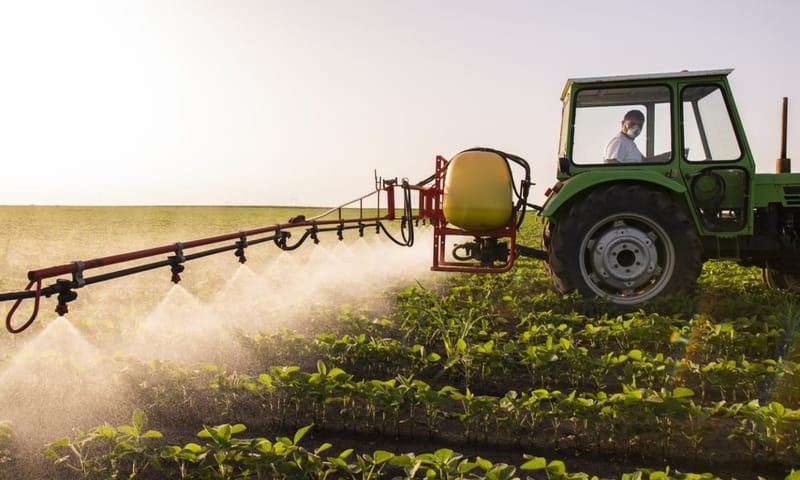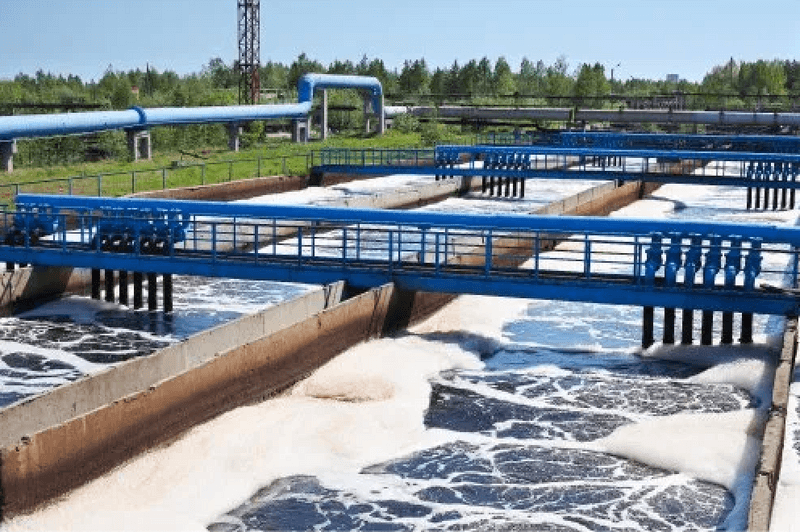Sustainable Solutions: The Difficulty of Treating Agrochemical Wastewater
Introduction
In the field of agriculture, increasing crop yields and guaranteeing food security depend heavily on the application of agrochemicals such fertilizers, herbicides, and insecticides. The production of agrochemical effluent is a major environmental problem associated with this reliance on chemical inputs. The water quality, ecosystem health, and human well-being are all seriously threatened by agrochemical effluent, which contains a variety of toxins such as toxicants and persistent organic compounds. This blog delves into the intricacies of treating wastewater contaminated by agrochemicals, examining the obstacles, creative fixes, and the necessity of sustainable management techniques.

The Difficulty of Treating Agrochemical Wastewater
Agrochemical wastewater presents a challenge due to its complicated composition, which includes a wide range of compounds originating from agricultural practices. Water bodies, soil, and groundwater are contaminated by pesticides, herbicides, fungicides, fertilizers, and their metabolites and breakdown products. Due to bioaccumulation and biomagnification, these pollutants have the potential to linger in the environment for long stretches of time, endangering animals, human populations, and aquatic species.
1. Complexity: Agrochemical wastewater is a heterogeneous mixture of diverse contaminants originating from agricultural activities. This complexity arises from the use of pesticides, herbicides, fungicides, and fertilizers, each containing a plethora of chemical compounds. Moreover, the breakdown products and metabolites of these chemicals further compound the complexity of the wastewater. Addressing this diverse array of contaminants requires a comprehensive treatment approach that can effectively target different classes of pollutants. Traditional treatment methodsmay not suffice, necessitating the development and implementation of advanced treatment technologies capable of handling the complexity of agrochemical wastewater.
2. Persistence: One of the key challenges in treating agrochemical wastewater is the persistence of certain chemical compounds in the environment. Many agrochemicals are designed to be resistant to degradation, allowing them to persist in soil, water, and sediments for extended periods. This persistence poses a significant environmental risk as these chemicals can accumulate in ecosystems over time, potentially leading to adverse effects on aquatic organisms and human health. Specialized treatment methods, such as advanced oxidation processes (AOPs) and membrane filtration, are often required to effectively degrade these persistent compounds and mitigate their impact on the environment.
3. Variability: The composition of agrochemical wastewater can vary widely depending on various factors, including agricultural practices, climate, soil types, and the types of agrochemicals used. This variability presents a challenge for wastewater treatment, as treatment systems must be adaptable to accommodate fluctuations in contaminant concentrations and composition. Moreover, seasonal variations and changes in agricultural practices can further complicate treatment efforts, requiring flexible and resilient treatment solutions that can effectively respond to changing conditions.
4. Emerging Contaminants: In addition to traditional agrochemicals, agrochemical wastewater may also contain emerging contaminants, such as endocrine-disrupting chemicals (EDCs) and pharmaceutical residues. These emerging contaminants pose unique challenges for wastewater treatment due to their potential impacts on human health and the environment. Addressing these contaminants requires specialized treatment approaches tailored to their unique properties and behavior in wastewater systems.

Innovative treatment solutions
These are vital in tackling the challenge of agrochemical wastewater, requiring sustainable approaches that effectively address the diverse range of contaminants present. Here's a closer look at some key innovative treatment methods currently being employed:
Advanced Oxidation Processes (AOPs):
AOPs are state-of-the-art treatment methods that break down persistent organic contaminants in wastewater by using extremely reactive radicals. These radicals are produced by processes like ozonation, UV irradiation, and persulfate oxidation. They have potent oxidative properties that can decompose complex chemical molecules into less dangerous, simpler forms. AOPs are a viable way to get rid of noxious pollutants that don't go away with standard treatment techniques.
Biological Treatment:
Biological treatment harnesses the natural power of microorganisms to degrade organic contaminants present in agrochemical wastewater. Various biological treatment systems, such as activated sludge systems, biofilters, and constructed wetlands, utilize different microbial communities to break down organic matter and remove pollutants. These systems offer environmentally friendly and cost-effective solutions for organic pollutant removal, with the added benefit of producing biodegradable byproducts
Membrane Technologies:
Membrane filtration techniques have gained prominence in agrochemical wastewater treatment due to their high efficiency in removing dissolved contaminants, pathogens, and ions. Ultrafiltration, nanofiltration, and reverse osmosis are among the membrane technologies employed to achieve efficient separation of contaminants based on size, charge, and molecular weight. These membrane processes provide a physical barrier that effectively removes contaminants while allowing clean water to pass through, making them indispensable components of modern wastewater treatment systems.
Integrated Systems:
Integrated treatment systems offer a comprehensive approach to agrochemical wastewater treatment by combining multiple treatment processes into a single, synergistic system. These integrated systems may incorporate physical, chemical, and biological treatment methods to achieve comprehensive removal of diverse contaminants present in the wastewater. By leveraging the strengths of different treatment processes, integrated systems maximize treatment efficiency and ensure the production of high-quality effluent suitable for reuse or safe discharge into the environment.

Regulatory Compliance
As essential safeguards for protecting public health and water resources, regulatory compliance and environmental impact assessments are essential parts of the treatment of pesticide wastewater.
In order to prevent the contamination of water bodies and to guarantee the safe management of agrochemical wastewater, regulatory agencies are essential in the establishment and enforcement of wastewater discharge guidelines. Agricultural operations have a moral and ethical obligation to adhere to these criteria in addition to being required by law. Industries may reduce the hazards to the environment from wastewater discharge and show their support for sustainable practices by following regulations.
Environmental impact assessments are conducted to ascertain the potential consequences of agrochemical wastewater discharge on human populations and ecosystems. These assessments consider a number of factors, including as the toxicity of contaminants, the recipient habitats' sensitivity, and the possibility of long-term ecological impact. Prioritizing actions to avoid negative environmental effects can help regulators and stakeholders make educated decisions about wastewater management.
Additionally, environmental impact evaluations offer important information about how well treatment strategies reduce the dangers connected to the discharge of wastewater containing agrochemicals. Regulators can determine if treatment procedures are fulfilling regulatory standards and producing the desired environmental outcomes by assessing treatment performance and keeping an eye on environmental indicators, such as water quality measurements and ecosystem health.
Conclusion
Agrochemical wastewater treatment represents a critical aspect of environmental stewardship and sustainable agricultural practices. By addressing the challenges posed by complex contaminants and embracing innovative treatment solutions, we can safeguard water quality, protect ecosystems, and promote the long-term viability of agricultural production systems. With a concerted effort towards research, technological innovation, and regulatory compliance, we can strive towards a future where agrochemical wastewater is managed responsibly, ensuring a healthier planet for generations to come.